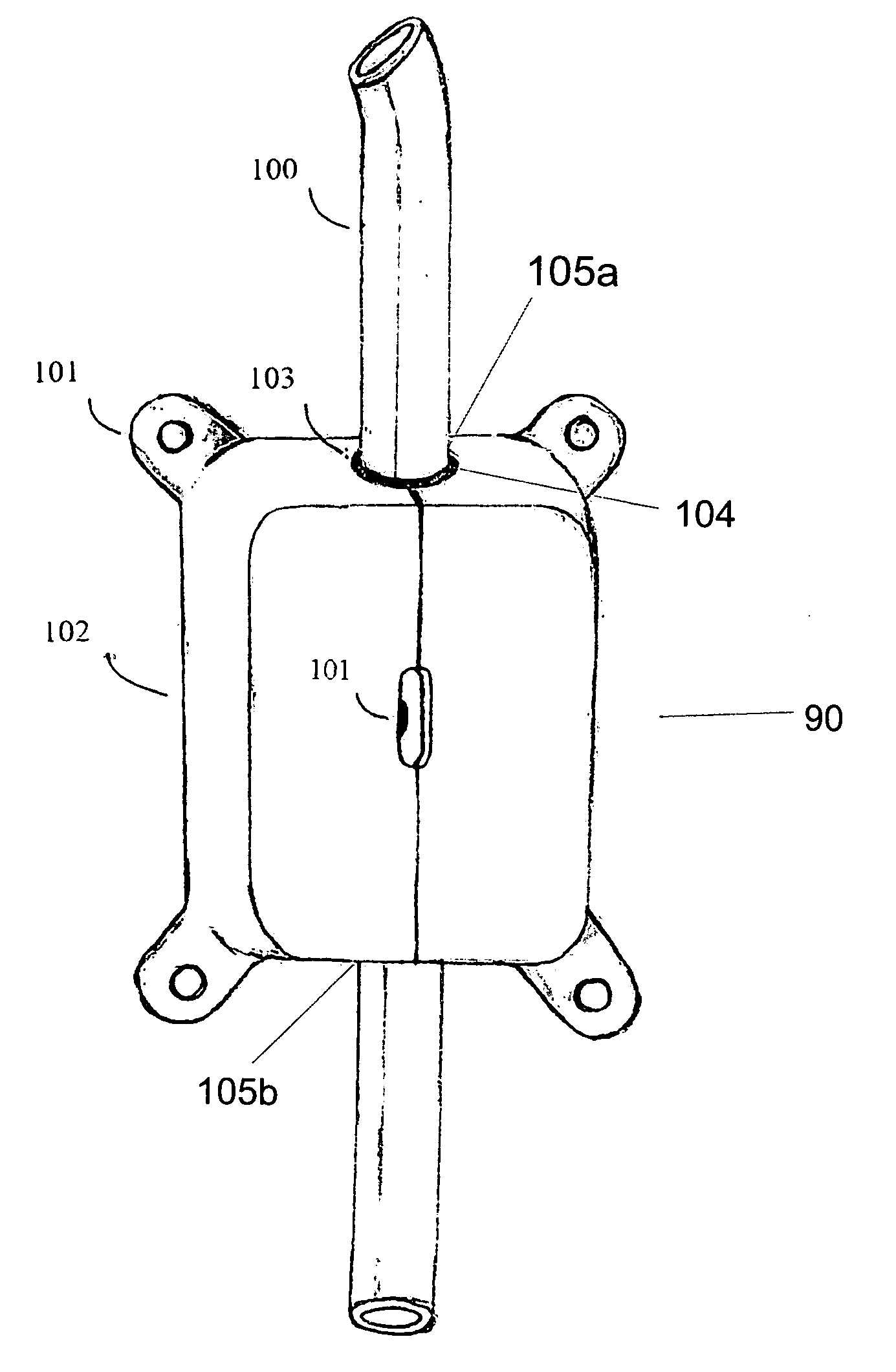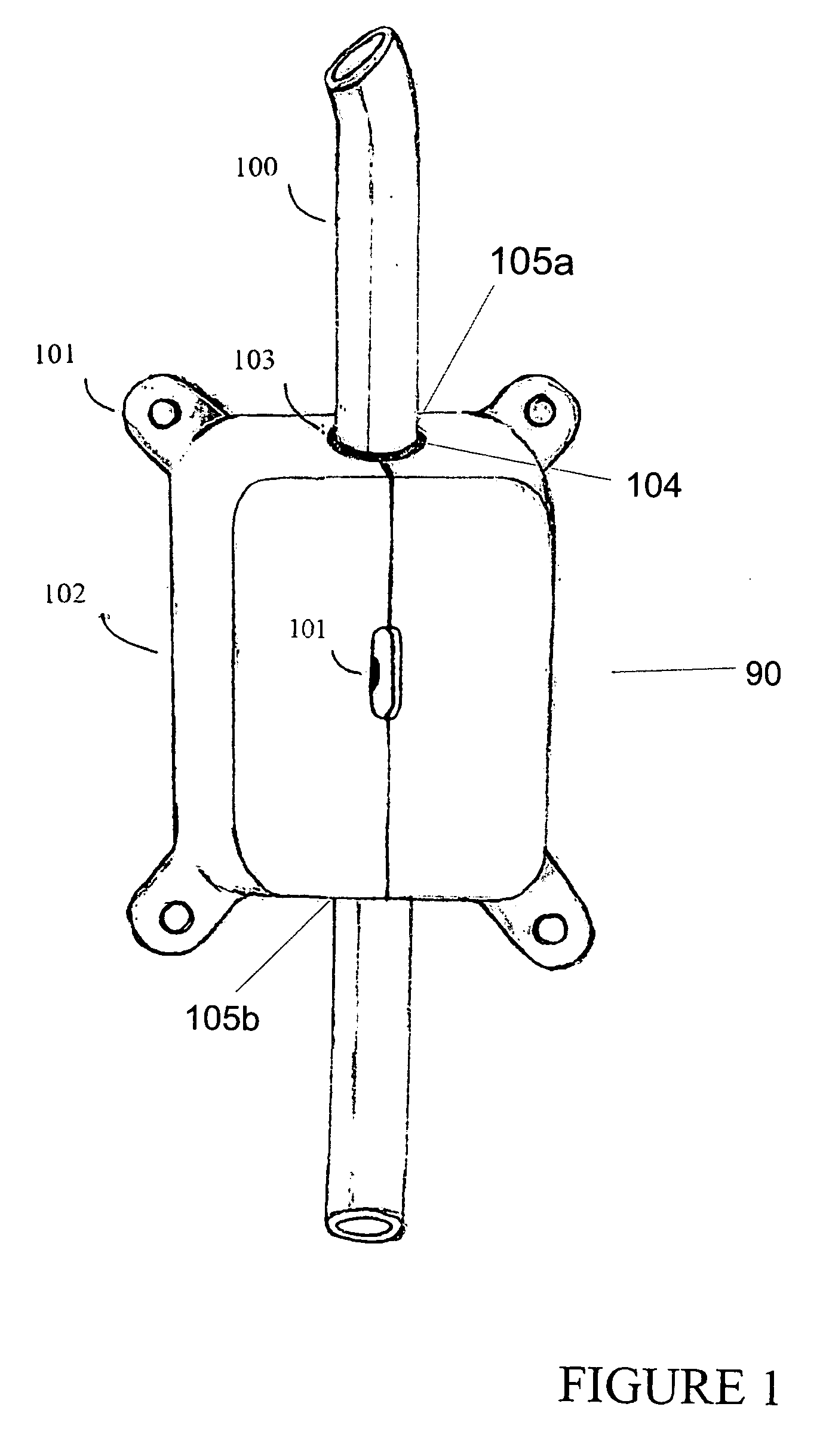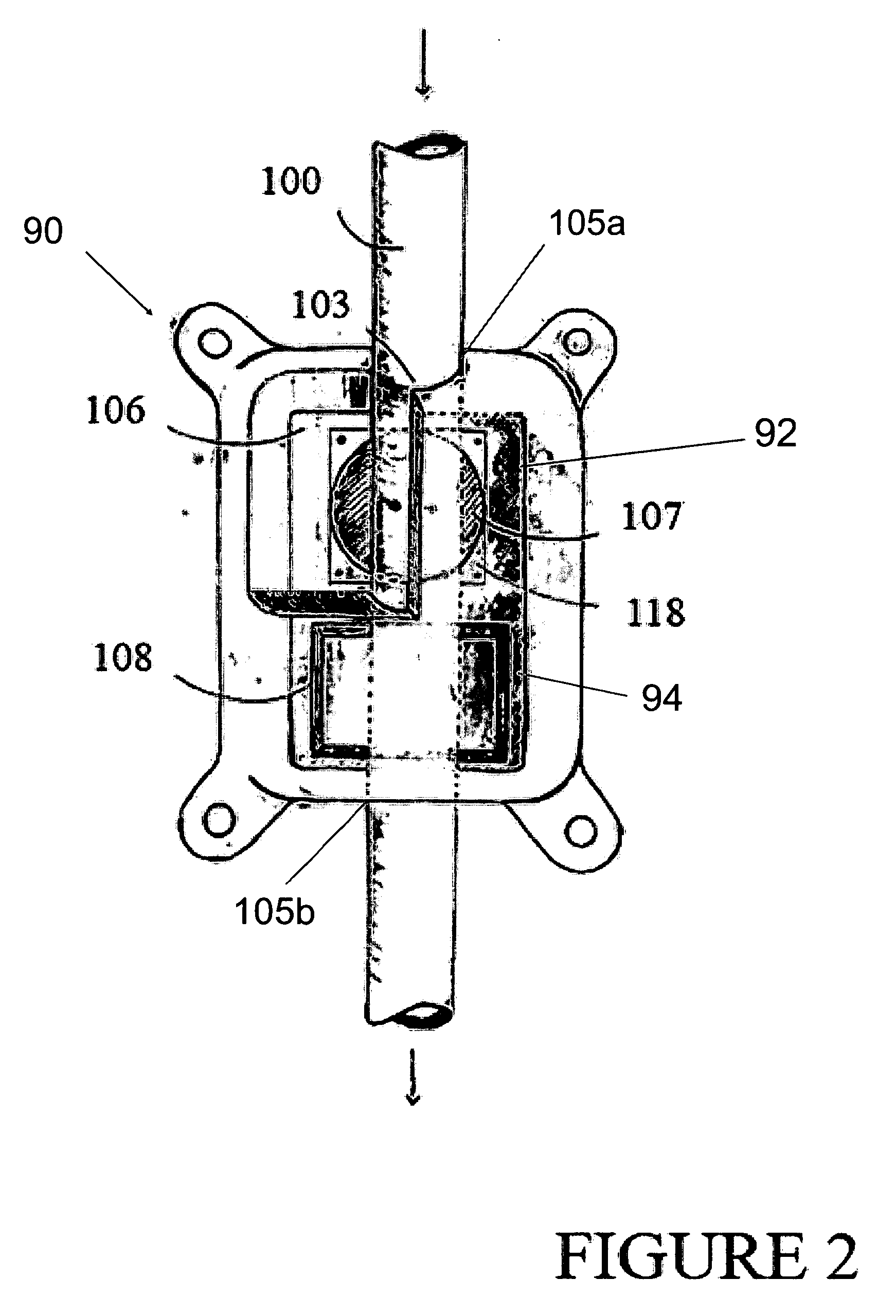Implantable anti-clogging device for maintenance of cerebrospinal fluid shunt patency
a technology of cerebrospinal fluid and anticlogging, which is applied in the field of shunting system, can solve the problems of clogging, shunt patency, and more malignant course, and achieve the effect of maintaining the patency of the shun
- Summary
- Abstract
- Description
- Claims
- Application Information
AI Technical Summary
Benefits of technology
Problems solved by technology
Method used
Image
Examples
Embodiment Construction
[0032]FIG. 1 shows an anti-clogging device 90 of the present invention. Anti-clogging device 90 maintains patency of tube 100 of a shunt. Anti-clogging device 90 includes a housing 102 that may be composed of titanium or any other suitable biocompatible material. Housing 102 provides a protective outer shell for the implantable device and has a hollow core thereby defining a compartment 92 to accommodate the device components. Housing 102 can be provided with smooth or otherwise blunted edges to minimize tissue trauma and may be variously shaped in alternate embodiments. In an exemplary embodiment, housing 102 has a flat bottom surface to maximize contact with the tissue to which it is secured. Shunt catheter tube 100 is traversing device 90 through central bore or passageway 103 which has a lumen configured and dimensioned to receive a section of tube 100.
[0033] Passageway 103 can be cuffed with a rubber bushing 104 (at points of entry 105a and exit 105b ports) to encourage tight ...
PUM
 Login to View More
Login to View More Abstract
Description
Claims
Application Information
 Login to View More
Login to View More - R&D
- Intellectual Property
- Life Sciences
- Materials
- Tech Scout
- Unparalleled Data Quality
- Higher Quality Content
- 60% Fewer Hallucinations
Browse by: Latest US Patents, China's latest patents, Technical Efficacy Thesaurus, Application Domain, Technology Topic, Popular Technical Reports.
© 2025 PatSnap. All rights reserved.Legal|Privacy policy|Modern Slavery Act Transparency Statement|Sitemap|About US| Contact US: help@patsnap.com



